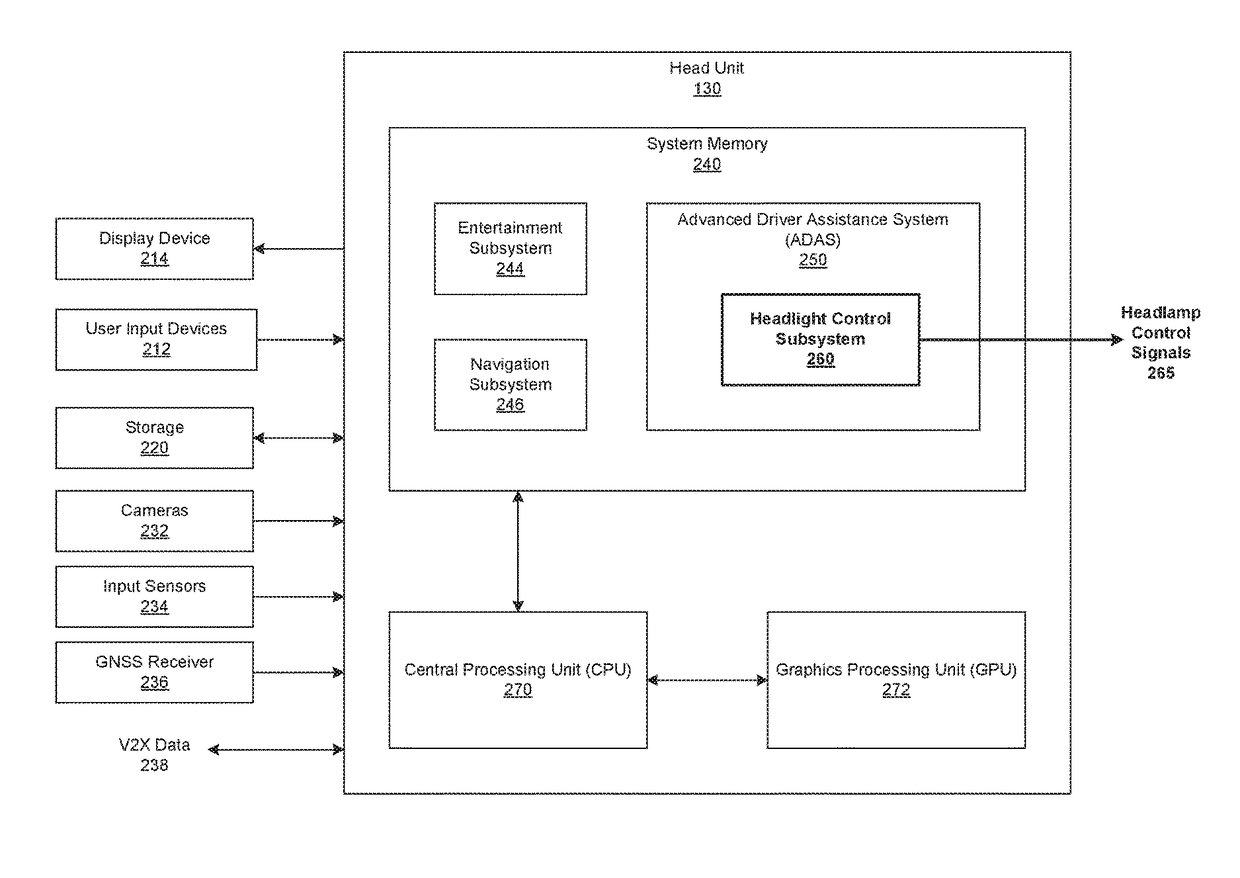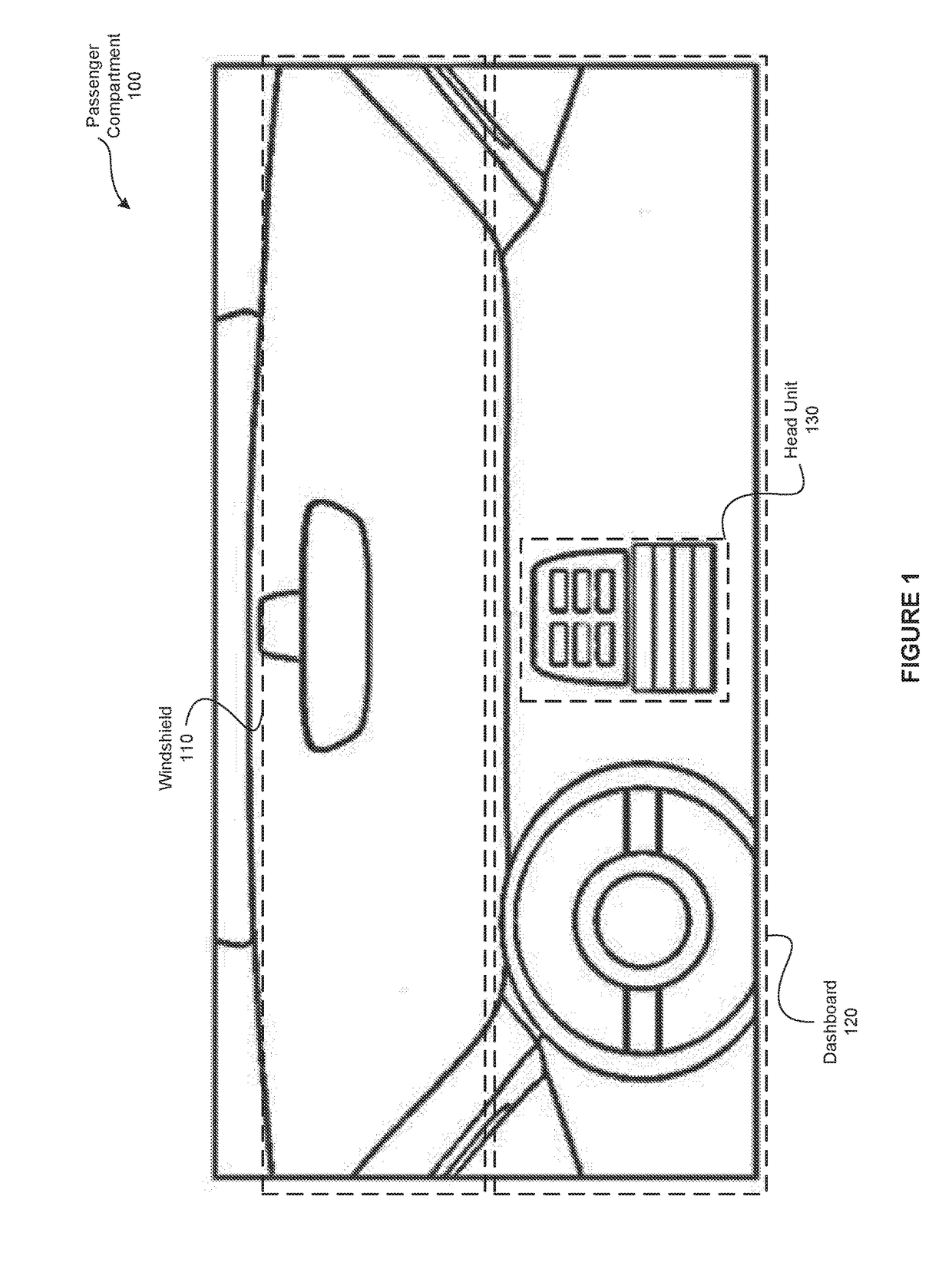Techniques for optimizing vehicle headlights based on situational awareness
- Summary
- Abstract
- Description
- Claims
- Application Information
AI Technical Summary
Benefits of technology
Problems solved by technology
Method used
Image
Examples
Embodiment Construction
[0002]The various embodiments relate generally to automotive systems and, more specifically, to techniques for optimizing vehicle headlights based on situational awareness.
[0003]Description of the Related Art
[0004]In general, low light conditions impair the ability of drivers to perceive the environment surrounding their vehicles. In particular, at night, the useful visual data that drivers receive via the windshields of vehicles is largely limited to illuminated objects. Such restricted “windshield views” dramatically increases the likelihood of collisions and accidents. To increase safety, vehicles are equipped with headlamps that produce “headlights”—beams of light that illuminate some of the environment in front of, and in the related front periphery of, vehicles, which effectively increases the windshield view. However, the ability of headlamps to illuminate those parts of the environment is limited. Consequently, drivers are oftentimes oblivious to objects that lie outside the...
PUM
 Login to View More
Login to View More Abstract
Description
Claims
Application Information
 Login to View More
Login to View More - R&D
- Intellectual Property
- Life Sciences
- Materials
- Tech Scout
- Unparalleled Data Quality
- Higher Quality Content
- 60% Fewer Hallucinations
Browse by: Latest US Patents, China's latest patents, Technical Efficacy Thesaurus, Application Domain, Technology Topic, Popular Technical Reports.
© 2025 PatSnap. All rights reserved.Legal|Privacy policy|Modern Slavery Act Transparency Statement|Sitemap|About US| Contact US: help@patsnap.com



